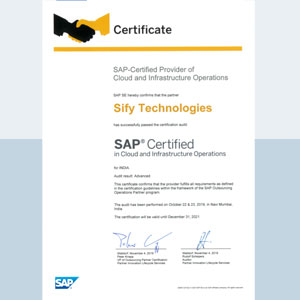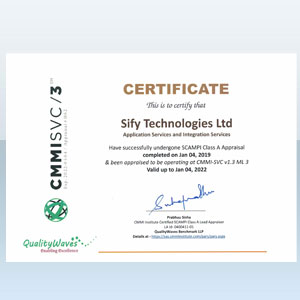Table of contents
Modern enterprise networks aren’t static topologies anymore. They’re programmable fabrics spanning metro backbones, SD-WAN overlays, cloud interconnects, data centers, and edge sites. Keeping that fabric healthy at scale demands more than SNMP (Simple Network Management Protocol) graphs and threshold alarms. It needs AI network management: streaming telemetry using AI, ML-based correlation, intent policies, and closed-loop automation that predict, prevent and self-heal networks.
Over the years, demand has shifted from “keep the link up” to “guarantee application outcomes” – on-demand QoS, policy-driven, business-value-aware routing, and continuous verification. In this dynamic, borderless enterprise, AI steers resources to revenue-critical traffic in real time, aligning network behavior with business intent.
This blog post breaks down how AI changes day-2 network operations, what it does to downtime, latency, and security, and why AI workloads themselves reshape network design and management approach. We’ll also take a close look at how Sify’s AI-driven network services map to these needs – especially for enterprises operating in India and the broader Asia-Pacific region.
What is AI network management?
AI Network Management is the use of artificial intelligence (AI), machine learning (ML), live telemetry, and closed-loop automation to automate, optimize, and secure the management of computer networks. AI Network Management helps to keep enterprise networks predictable, reliable and secure across MPLS, Internet, SD-WAN, data centers, and cloud. Instead of relying only on human administrators to configure, monitor, and troubleshoot networks, AI-driven tools can analyze traffic patterns, predict issues, and make real-time adjustments to improve performance, reliability, and security.In India, Sify applies this to real traffic patterns across Mumbai, NCR, Bengaluru, Chennai, and Hyderabad – predicting faults, and rerouting or rebalancing bandwidth allocations through dynamic network slicing via SD-WAN to maintain QoS in real time – so customer-facing apps stay fast, secure, and available while maintaining low-latency paths to AWS/Azure/Google/OCI in Asia-Pacific.
- Sify in India: Built on an India-born backbone and carrier-neutral data centers, Sify’s below ms latency to the cloud and terabyte bandwidth across major tier 1 and tier 2 cities along with 3700+ pops across 1600+ towns managed through Sify’s unique AI Network Management in India helps enterprises meet uptime and latency targets without over-provisioning.
- Sectors & routes: Designed for India’s BFSI, healthcare, public sector, manufacturing, with optimized routes for India ↔ APAC traffic to keep APIs and collaboration tools responsive.
Why AI is reshaping enterprise network management
A network engineer sees three hard truths:
- Telemetry volume outpaces humans. Millions of flow records, interface counters, error vectors, BFD flaps, TLS fingerprints, and app traces per hour. Static thresholds drown you in noise; unsupervised ML can isolate weak signals (e.g., pre-failure error drift on a 100G optic) from the alert storm.
- Hybrid is the new normal. MPLS + Internet underlay, SD-WAN overlays, private cloud, hyperscaler edges, colocated DCs, and SaaS. Performance is path-dependent and time-variant; AI helps continuously re-evaluate cost optimized paths depending on traffic types given latency, jitter, loss, utilization, and business priority.
- SLAs are intent, not interfaces. Users don’t care about interface errors; they care that “checkout APIs stay <120 ms p95 end-to-end.” AI/intent controllers translate business intents SLOs into measurable SLIs and automatically tune policies (QoS, ECMP, FEC, path selection) to hold the line.
How AI network management reduces downtime and improves uptime guarantees
Downtime is rarely one catastrophic event; it’s usually small degradations that go uncorrelated until they cascade. AI network management identifies and addresses that pattern:
- Predictive faulting. Time-series models track CRC/error rates, laser bias current, temperature, micro-bursts, and control-plane churn to flag “probable failures” to even at times “probable failures within X hours” on specific optics, line cards, links, or nodes.
- Root-cause correlation. Graph models in FSO relate alarms across layers (optical → L2 → L3 → overlay → app) to suppress noise and isolate the first domino, collapsing MTTD/MTTR.
- Closed-loop remediation. If a core link’s BER trends up, the controller pre-emptively drains and reroutes sensitive classes, shifts traffic to alternate paths, or bumps QoS weights while a maintenance ticket is issued.
- SLA-aware change windows. AI systems learn business traffic cycles (e.g., India payroll days, festive sales) and schedule intrusive changes to minimize risk.
Tackling network latency with predictive analytics
Latency kills customer experience long before an outage does. Engineers treat it as a path and queueing problem:
- Forecasting & pre-provisioning. Seasonal models predict link utilization spikes (e.g., end-of-month BFSI batch windows in Mumbai–Pune corridors). The controller pre-positions bandwidth, adjusts policers, and primes caches/edges.
- Dynamic path selection. AI ranks candidate paths by composite health score (RTT, jitter, loss, reordering). Sensitive classes (voice, APIs, GPU RPCs) ride the “green paths,” while bulk flows take best-effort.
- Buffer & AQM tuning. Continuous learning adjusts queue depths, ECN/RED thresholds, and pacing to avoid bufferbloat tail-latency spikes.
- Edge proximity. For India-wide apps, serving from regional PoPs/edges keeps round trips under user-experience thresholds.
Securing enterprise networks against server security risks
What it is. Server security risks = weaknesses or malicious activity on VMs/containers/app-DB/web servers that enable data theft, lateral movement, or outages.
Why edge-only fails. Most traffic is east–west; once an attacker is inside, they bypass the perimeter.
- Detect. Learn normal flows and flag simple signs: new/suspicious destinations, beacon-like callouts, unusual outbound data, odd-hour logins.
- Contain. Micro-segmentation & intent: if a workload talks outside its allowed policy (e.g., App→DB only), auto-quarantine the host/flow.
- Respond & prove. Automate blocks/rate-limits/isolation in seconds and log actions against controls used in India’s BFSI/health/public sector.
Why “AI workloads” change the network you need
AI in the NOC is only half the story. AI network workloads (LLM training, vector DB sync, GPU-to-GPU RPCs, real-time inference at edge) demand:
- High-bandwidth spine & DCI. East-west flows between accelerators need 100G/400G non-blocking fabrics and low-loss paths; inter-DC replication wants predictable long-haul RTT.
- Jitter discipline. Inference and microservice graphs are latency-sensitive; the network must keep p95/p99 tight, not just average low.
- Priority plumbing. AI pipelines shouldn’t starve business-critical traffic; policy hierarchies (priority queues, SR-TE (Segment Routing Traffic Engineering), deterministic paths) guarantee both.
- Observability hooks. GPU jobs export backpressure/throughput, which the controller ingests to adapt paths and protect SLO driven sensitive classes dynamically.
Sify’s AI network services (architect’s view)
Sify offers a carrier-neutral, India-wide digital fabric that spans enterprise WAN, cloud interconnect, and data-center campuses in tier 1 cities and edge data centers in tier 2 cities connected over terabit bandwidth – well-suited for AI-era operations. Here’s how that maps to AI network management in India and the capabilities you would expect:
Programmable backbone & overlays
- National backbone with multi-protocol underlay (MPLS, Internet, partner long-haul) and software-defined overlays (SD-WAN) to steer classes by intent – critical for real-time SLO compliance across India’s metro corridors.
- Cloud on-ramps and peering to major hyperscalers – shorter paths to cloud regions used most by Indian enterprises, improving security by direct cloud connectivity without the data traveling through public internet, API and data-pipeline RTTs.
AI-assisted assurance
- Real-time telemetry ingestion across underlay and overlay (flow records, interface KPIs, app probes).
- ML correlation separates the first-cause event (e.g., marginal optical signal on a specific span) from downstream alarms, enabling pre-emptive reroutes and faster MTTR.
- Closed-loop policies: when link health degrades, the controller shifts latency-sensitive classes (voice/transaction APIs/GPU RPCs) to healthier paths while opening a maintenance window.
Latency engineering for India + APAC
- Regional PoPs/edges to keep content and inference near users in Mumbai, Chennai, Hyderabad, Bengaluru, NCR, etc. Sify has 3,700+ points of presence (PoPs) in 1,600+ cities.
- Path diversity across long-haul routes to guard against fiber cuts and metro events; AI keeps composite path-health scores updated and makes hop-by-hop decisions.
Security embedded in the fabric
- Behavior/anomaly detection on NetFlow/IPFIX + selected packet features; automated micro-segmentation and quarantine flows at the fabric edge.
- Compliance-aligned operations for regulated verticals (BFSI, healthcare, public sector) common in the Indian market.
AI workload readiness
- High-bandwidth interconnects between Sify data centers and customer campuses for GPU clusters and data pipelines.
- Policy-based prioritization of AI training/inference flows without starving ERP/transactional apps – hierarchical QoS and SR-TE to enforce business intent.
Talk to us: If you’re exploring AI network management or AI-workload connectivity in India/APAC, our architects can map intents → SLOs → policies and show how it lands on Sify’s fabric: https://www.sifytechnologies.com/contact/
Implementation blueprint: how to get there through AI network management
- Instrument everything. Turn on high-cardinality telemetry (flows, app probes, interface KPIs) and export to a scalable data plane (Kafka/TSDB).
- Model baseline + drift. Use unsupervised ML to learn “normal” by site, hour, class; alert on drift and slow burns.
- Define intents. Express business SLOs: “<80 ms p95 between NCR ↔ Mumbai for checkout APIs; <0.5% loss for voice; protect inference micro-services at p99 <15 ms.”
- Automate guarded changes. Closed-loop enforcement with change windows, blast-radius limits, and rollbacks.
- Segment by design. Micro-segment east-west; make exceptions explicit; verify continuously.
- Test under load. Synthetic transactions and chaos drills across India routes (e.g., fiber-cut simulations) to validate SLOs.
- Operationalize the runway. Tune queues, SR-TE intents, underlay/overlay policies, and runbooks; measure MTTR, p95/p99, loss, and SLO conformance weekly.
Conclusion
AI network management replaces guesswork with math and muscle memory with automation. It shrinks downtime, stabilizes latency, hardens security, and makes room for AI workloads without sacrificing business traffic. For enterprises operating across India and APAC, aligning intents to SLOs – and landing them on a backbone and DC footprint engineered for the AI era – is now the competitive baseline. AI network management enables this.
If you’re ready, we’ll map your current state, define your intent, and show how to land them (policy by policy) on a fabric that thinks for itself. Let’s talk.























































